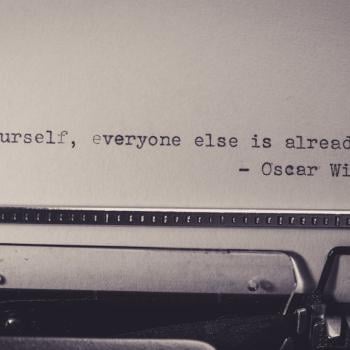
Excerpt from the book Copyright © 2025 by Karl Forehand
Finding Regulating and Somatic Healing
“The body always leads us home . . .
if we can simply learn to trust sensation and stay with it long enough
for it to reveal appropriate action, movement, insight, or feeling.”
– Pat Ogden
Before I learned about deconstruction, I viewed regulation only as the rules that governments enforce to manage the populace, protect the environment, and promote the general welfare of citizens. However, with a deeper understanding of trauma, I now see another definition of regulation: a way to soothe my nervous system when I face triggers. This definition may seem simplistic, but it has proven incredibly beneficial.
Our body’s ability to regulate the nervous system helps maintain balance by transitioning between states of arousal, moving from “fight” or “flight” to a more relaxed and controlled state. Regulation allows us to adapt to stressors and prevents us from feeling overwhelmed when events occur. The autonomic nervous system, which manages involuntary functions, plays a crucial role in this regulation, with the sympathetic (fight or flight) and parasympathetic (rest and digest) branches working together harmoniously.
Nervous system regulation is crucial for managing stress, maintaining emotional stability, and ensuring optimal physical functioning. Excessive anxiety or panic, difficulty concentrating, muscle tension, sleep disturbances, digestive issues, and irritability are signs of a dysregulated nervous system.
Examples of Regulating Techniques
Several well-documented practices help regulate our nervous systems. It’s important to understand that these practices need to be learned. They don’t always produce excellent results the first time we try them. However, with practice, we can find the most effective ways to regulate ourselves and support others. We must pause long enough to apply the best technique when we feel overloaded.
Mindfulness is a meditation practice that helps you be aware of your current experience without judgment. It also helps reduce stress and improve emotional management. Mindfulness helps the person pay attention to the present moment without judgment and offers numerous mental and physical health benefits, including:
- Reduced stress and anxiety—cultivates a sense of calm and acceptance, reduces stress hormones, and promotes relaxation.
- Improved emotional regulation—enhances the ability to manage emotions effectively by observing thoughts and feelings without becoming overwhelmed.
- Increased self-awareness—improves understanding of thoughts, emotions, and behaviors, which leads to greater self-compassion and acceptance.
- Enhanced focus and concentration—boosts attention and concentration by quieting the mind and being present.
- Reduced rumination—breaks the cycle of negative thoughts and worries and promotes a more positive outlook.
- Improved sleep quality—alleviates stress, encourages relaxation, and improves sleep patterns.
- Reduced pain perception—manages chronic pain by shifting focus.
- Boosted immune system—boosts the body’s immune response, lowering the risk of illness.
My experience with mindfulness has evolved over the years. Initially, I struggled to sit still for long periods, but with practice and the guidance of a quietness retreat, I learned to remain still for longer without feeling restless. At first, I relied on a simple technique called centering prayer, an ancient Catholic tradition. I would clear my mind, dismiss thoughts without judgment, and focus on a meaningful word. I didn’t expect or request anything, or even express gratitude. I learned how to be still. I often found myself inspired to write or reflect on an intriguing new phrase or idea in that stillness.
Sometimes, I have a specific intention when I meditate. While this offers benefits, I remain wary of ignoring any dark issues that arise within me. Since mindfulness can help us connect with our bodies, our bodies may be trying to communicate something about the parts of us that still hold trauma. We must be cautious not to choose the easier path and ignore what our bodies are trying to tell us.
Breath training, or breathwork, is a technique that strengthens breathing muscles, which can improve health and well-being. Deep breathing exercises can help us breathe more slowly and regularly. Breathwork videos and apps are available online. Some of the observed benefits of breath training are:
- Improved performance in many areas.
- Reduced risk of injury by being more aware of our bodies.
- Improved heart health by helping promote heart health and reducing high blood pressure.
- Improved lung function can help rid your lungs of stale air and increase oxygen levels.
Yoga practitioners are among the best teachers of breathwork. It is woven into most of their poses and practices. If we can pause, even when triggered, and take a few good breaths, our body can reach a regulated state where our neocortex can return online and help us respond instead of reacting.
I find myself breathing deeply quite often. When something startles or surprises me, I notice my body reacting. Therefore, I’m learning to breathe, which enables me to respond with greater reason and positive resolve. It reduces my heart rate and helps me become more aware of everything happening. Regulating techniques are varied and should focus on managing emotions and maintaining a balanced state by being aware of and managing thoughts and behaviors. Some other examples of regulation are:
- Cognitive reappraisal changes our perception of a situation to alter its emotional impact.
- Attention control is used to direct focus to specific aspects of a situation to manage emotional responses.
- Situation selection:Choosing to actively avoid or engage with specific environments or people to influence your emotional state.
- Self-talk is using internal dialogue to influence your emotions and behaviors positively.
- Imagery is when we visualize calming scenarios to promote relaxation.
- Cognitive behavioral therapy (CBT) is a therapeutic approach that teaches individuals to identify and modify unhelpful thought patterns and behaviors.
As mentioned, most regulating techniques depend on pausing to breathe and using our strategies. The pause gives the thinking part of our brain a chance to start functioning correctly again so that we can reason with current events.
If you work with children, I highly recommend Ginger Healy’s book 15-Minute Focus: Regulation and Co-Regulation: Accessible Neuroscience and Connection Strategies that Bring Calm into the Classroom.
How Religion Might Help
When I was a pastor, we understood very little about what triggers people and how to help them regulate their emotions. However, I must admit that some practices in many religions do assist us in regulation. In most churches with staff and buildings, we enter the climate-controlled sanctuary after being warmly greeted by smiling individuals outside. This greeting makes us feel more welcome and likely slows our heart rate, easing the anxiety we may have experienced when meeting new people.
When someone came forward to pray at the altar, another person would join them to help ease their anxiety and show support. In most cases, this helped slow their heart rate and made them feel welcomed, while for others, physical closeness was a trigger in and of itself.
Small groups are helpful in healing, much like 12-step programs, where people can admit they struggled and encourage each other nonjudgmentally. However, all of these types of options are also subject to abuse because we have to make ourselves vulnerable to access them. As you can imagine, people often take advantage of that.
Group singing is considered a regulating activity because it stimulates the release of hormones such as oxytocin and endorphins.[1] These hormones enhance feelings of well-being and social connection while reducing stress. This process calms both body and mind, simultaneously fostering a sense of belonging among participants. Thanks to the synergy of coordinated breathing, rhythmic sound, and social interaction, it is a natural stress reliever.
Although releasing these chemicals isn’t permanent, they relieve our pain and shift our mood just enough to make us want to return and feel good again. Like any drug that influences emotions, religion can become addictive. Consequently, it demands more money and time, requiring larger doses to keep us balanced. It’s not only religion that does this, but it is often the chosen opium (drug) of the masses.
In my view, most sermons and homilies do not regulate us. Instead, they often induce a state of dysregulation by scolding us for our wrongdoings while emotionally highlighting problems we may not have previously recognized. I believe this fosters anxiety and a desperate need for answers, which the speaker then provides. It isn’t easy to see sermons as positive when they dysregulate us only to re-regulate us and take credit for it. Churches can sometimes resemble an abusive family member who creates chaos but demands credit for cleaning up the mess.
After the service, friends may shake hands, hug, and exchange words of encouragement. Some churches also provide visitation programs where they call or visit individuals who have attended their services to express their appreciation. Additionally, some people may invite you to participate in activities, take you to lunch, or engage in other gestures designed to ease your anxieties about their group and encourage you to return.
These practices are usually reasonably practical within religious settings but are targeted and directed toward newer members or visitors. After a few years in a religious organization, their effectiveness diminishes, and church leaders must reach out to others. Generally, when we feel frustrated in church, we are encouraged to engage more (pray, read the Holy Book, volunteer, make sacrifices). Frustrated individuals often attend conferences, retreats, and sabbaticals to regain that initial feeling of inclusion and purpose.
Regulation plays a critical role in the trauma cycle. Many things in religion can lead to trauma, and failing to address this trauma can result in further dysregulation. Religious organizations often fall short of providing mental health solutions like trauma-informed counselors or adequate time to process our pain; they essentially offer only a temporary fix on which we become increasingly reliant, even though it will never fully resolve our issues.
However, this does not diminish the significance of regulation. Hopefully, as adults, we will gradually learn to self-regulate throughout our lives. The most effective long-term solution for enhancing our regulatory abilities is engaging in somatic practices that integrate the mind and body. When triggered, techniques such as breathwork help me manage my reactions and restore my cognitive function. Furthermore, somatic therapies provide even greater benefits by addressing the root trauma that contributes to my responses to triggers and assisting in integrating these experiences so that my brain and body can respond differently to trauma triggers in the future. This gradual growth process takes time, focus, and effort.
Somatic Therapy
Amanda Baker, the director of the Center for Anxiety and Traumatic Stress Disorders and a clinical psychologist in the Department of Psychiatry at Massachusetts General Hospital, describes Somatic Therapy as “a treatment centered on the body and the manifestation of emotions in it. Somatic therapies suggest that our bodies store and express experiences and emotions, indicating that traumatic events or unresolved emotional issues can become ‘trapped’ within us.”[2]
Talk therapies focus primarily on the mind, fostering awareness that ideally leads to behavioral changes. Somatic Therapy promotes body awareness, allowing individuals to explore thoughts, emotions, and memories collectively. It facilitates change, enhances resilience, and alleviates symptoms of PTSD, depression, and anxiety. Consequently, we become more aware and better equipped to respond to life’s demands and triggers, ultimately enhancing our overall well-being.
I am familiar with the therapies listed below and have experienced or witnessed results in others. None of them come to us magically, and most require dedicated effort over time. It is essential to do our research and consult professionals.
Disclaimer: Although we have helped many people, we are not licensed clinicians. We rely on and report only on our experience and the experience of professionals. Always do your homework and consult a professional.
Focusing is a tool we frequently use when connecting with our shadow and learning to be authentic and present. It is a body-centered process of self-awareness that fosters emotional healing. This practice involves recognizing how you feel and where those feelings manifest in your body. We have guided individuals through simple in-person and online sessions to help them shift their stuck emotions and advance toward wellness. Our bodies are already attempting to communicate with us about past trauma and pain.
The International Focusing Institute clarifies: “Your body knows more about situations than you know. For example, your body picks up more about another person than you consciously know. With a little training, you can get a bodily feeling for the ‘more’ that is happening in any situation. From that bodily feel come small steps that lead toward resolution.”[3]
Focusing sessions resemble counseling sessions but are a bit more targeted and introspective. A companion or observer guides you through this straightforward process to assist you on your journey of self-discovery. This therapy has informed me and helped me break free from those stagnant places. A basic format is accessible at The International Focusing Institute and in Eugene Gendlin’s book, Focusing.
Learning this therapy is relatively straightforward, but finding an experienced companion to join you first is crucial. For me, that was a group of Benedictine Sisters in Atchison, KS. I also have several friends who serve as excellent companions for these sessions. However, I often find that I can focus when prompted by pausing and turning inward. This practice helps the trauma shift and adequately integrates it into my nervous system.
Dr. Aimee Apigian has a similar process called “Parts Work,” and Dr. Peter A. Levine promotes “Somatic Experiencing.” We use similar language in focusing when we say, “A part of me feels (insert feeling/emotion) …” This makes it more manageable because we can focus on an angry part but can’t effectively manage a statement like “I am angry.” It’s too much! It’s overwhelming!
By focusing on the part that alerted us, we can speak to our inner child and our inner critic (protector) and improve that part of us. The companion in this strategy is an empathetic witness who generally listens and doesn’t say anything. They do not judge or give advice but encourage the focuser to uncover what the “part” is trying to tell them.
Eugene Gendlin emphasized, “The core of the whole undertaking in moving towards the unknown in myself – the Murky Edge as the crucial point of reference.”[4]
Knowing what we feel and where we feel it is only the beginning. The “shift” comes when we can be with the murky part long enough for it to become more apparent. This felt sense is a bodily awareness that encompasses everything you feel and know about a situation, person, or event, rather than detail by detail. With focus, this leads to the focuser experiencing a shift in the part of them that was alerting them to danger. In the future, they will be less likely to react and can better respond to situations that might trigger this reaction. Some refer to this as integrating the trauma. There is no need to cast it out, demonize it, or condemn it in any way. It is a part of us that needs to be incorporated into our whole. Similar things may still trigger us in the future, but our nervous system now responds rather than reacts to what would otherwise be traumatic.
Read these books: The Body Keeps the Score by Bessel van der Kolk, Bringing Your Shadow Out of the Dark by Robert Augustus Masters, and Focusing by Eugene Gendlin.
Breathwork seems almost too simple. But I remember being captivated by the connection between the words spirit and breath when I studied scripture. Our first breath gives us life and makes us living beings. Intentional breathing is a valuable tool for self-regulation. Laura and I now practice this almost subconsciously to manage stress and the triggers in our lives.
Charlotte Mulloy, a respected psychotherapist based in Colorado, explains, “Because breathwork involves the physical act of breathing and the mental act of focusing on the breath, it effectively links the mind and body, aiming to provide awareness and insights into your nervous system and emotions.”[5]
Yoga provides various breathwork techniques (pranayama) to activate, energize, relax, or calm. With practice, these methods can lead to effective outcomes in our lives as regulating and healing practices. Our breath has a profound influence on our emotional health and well-being.
According to Brainline.org, Eye Movement Desensitization and Reprocessing therapy (EMDR) is “a form of trauma-focused cognitive behavioral therapy specifically developed for reducing the power of traumatic memories. A trained therapist will guide you to think about trauma while moving your eyes back and forth, left to right. Over time, this will help your brain reprocess the memories, so they no longer cause as much pain.”[6]
Laura and I have not experienced this therapy firsthand, but our friends have demonstrated its effectiveness. EMDR requires a trained therapist, and unlike some other treatments, it necessitates that you be aware of the traumatic memory you are attempting to reprocess. Some helpful sources that recognize EMDR as effective:
- American Psychiatric Association
- International Society for Traumatic Stress Studies
- Substance Abuse and Mental Health Services Administration
- S. Dept. of Veterans Affairs/Dept. of Defense
- The Cochrane Database of Systematic Reviews
- World Health Organization
Find more information at:
As with all therapies, it is essential to research and seek a qualified professional’s opinion.
Like most other things, mindfulness can be misused. I have a mindfulness practice similar to the ancient practice of centering prayer. I dismiss my thoughts without judgment and become intently aware of what the universe and my intuition are trying to tell me. It usually manifests as a simple statement, idea, or clarification. It’s beneficial for me.
Mindfulness practices can also help us recognize our emotions. They allow us to focus on one thing at a time and identify where we feel our feelings in our bodies. As you may realize, this naturally coordinates and communicates with other therapies.
One of the pitfalls of mindfulness is that mantras can be used to move toward our goals while bypassing our wounds and trauma. The trauma doesn’t disappear simply because we manifest a new reality or direction. Trauma cannot be healed through positive thinking alone; it requires deep inner work. That said, a purposeful mindfulness practice can enhance other effective therapies if we don’t overlook what our bodies are trying to communicate.
As the Cleveland Clinic explains, hypnotherapy is “a heightened state of concentration and focused attention. Under the guidance of a trained, certified hypnotist or hypnotherapist, hypnosis allows you to be more open to suggestions for making healthful changes in your perceptions, sensations, emotions, memories, thoughts, or behaviors.”[7]
Hypnotherapy is moderately effective for me. I occasionally seek my friend’s help, a trained therapist. I have found it beneficial after other treatments and therapy sessions as a means to reinforce what I was already implementing. For me, it has been a valuable tool in my recovery. While I was a pastor, one of my insights was that most Christian services are at least mildly hypnotic. Michael Sherlock of ExChristian.net says this in his Church and Hypnotic Manipulation blog. He first explains the five stages of hypnosis:
- Introduction
- Induction
- Deepening
- Suggestion
- Awakening
Then he says, “It is the contention of this author that the same five stages can be found within most Christian church services. The hypnotic techniques employed during church sessions have served further to entrench Christian beliefs into the minds of Christian subjects and so demonstrate the mentally manipulative religious package offered by the Christian religion.”[8]
It is generally understood that hypnosis requires these four things for it to work as expected:
- Belief
- Imagination
- Conviction
- Expectation
From this, he explains, “These elements are generally found in abundance in the mind of the true believing, church-going Christian. Generally, those who attend church believe that their pastor or preacher is speaking the word of God, which has very powerful psychological implications and satisfies the first criterion of the list above. Further, the churchgoer’s imagination is engaged at almost all times throughout the service, during the singing, the sermon, the prayer, and it is probably the hardest working aspect of the four criteria set out above.”32
He concludes, “Professional hypnotists say that the subject must have conviction, and the stronger, the better! Almost nothing in this world inspires conviction like one’s religious beliefs. The attendee is convinced that the church service is permeated by the spirit of their God, which leads to the expectation that they will ‘feel the spirit.’ In truth, the elation from ‘feeling the spirit’ may be little more than the pleasure and catharsis of entering a trance.”26
As a former pastor, I agree that Christian religious services function similarly to hypnotic trances. They are highly effective yet often lack authenticity in their admissions about the practices. They would never admit to hypnotizing their congregations, even though that is precisely what they do. Nowadays, the rhythm of sermons and key changes in music seem almost scientific. Lighting, sound, and group energy all work together to create change. The service strips away our filters with these practices and speaks directly to our subconscious.
Although I oppose using hypnosis in this manner, I recognize that it can be very effective. Each individual must decide how to utilize these types of therapies. Getting past the conscious mind for some healing is essential, but it’s also important to consider what suggestions are made once we reach that state.
I encourage you to explore various regulating and somatic therapies. Only by investigating and practicing them yourself will you truly know if they work for you. As mentioned earlier, “nervous system regulation is crucial for managing stress, maintaining emotional stability, and ensuring optimal physical functioning.” However, we can indeed integrate our trauma so that we respond to triggers rather than react to them.
I believe these therapies will help us live lives that are less controlled by reactions to triggers, allowing us to engage in the game we want to play in our own way. We can trust that our brains can be rewired when we act according to sound judgment, science, and responsible reasoning.
Regulation/Somatic Therapy – Action Steps
What are your thoughts on regulation?
What do you know about Somatic Therapies?
Explore techniques for regulation and list them here.
Spend 5 minutes writing freely about your thoughts on this chapter and the questions that arose for you.
[1] https://www.operanorth.co.uk/news/10-reasons-singing-is-good-for-you/
[2] https://www.health.harvard.edu/blog/what-is-somatic-therapy-202307072951
[3] https://focusing.org/felt-sense/what-focusing
[4] https://focusing.org/ar/event/focusing-and-murky-edge
[5] https://www.forbes.com/health/mind/somatic-therapy/
[6] https://www.brainline.org/treatment-hub-treating-brain-injury-and-ptsd/eye-movement-desensitization-reprocessing-emdr [7] https://my.clevelandclinic.org/health/treatments/22676-hypnosis
[8] https://new.exchristian.net/2012/05/church-and-hypnotic-manipulation.html
Learn to be Where You Are (Presence)
Getting Away From Your Trauma Getting Out of Survival Mode
Are you serious about deconstruction and asking bigger questions?
If that’s the case, this book was created for you. As a former pastor, I made the mistake of deconstructing a bit and then trying to start something new, as I was trained to do. The problem with that approach is that I wasn’t ready to begin something new.

I hadn’t delved deeply enough or asked enough questions. The first stage of deconstruction typically includes assessing our beliefs regarding hell and the afterlife, supporting queer individuals and women in their fight for equality, and achieving a better understanding of racism and privilege.
Many people in deconstruction communities expend significant effort criticizing Evangelicals and attempting to gain a following. While I believe they deserve intense criticism, this strategy fails to effectively tackle the problem because they generally don’t listen to us!
Our tendency to punish our former organizations sometimes overlooks the challenging process of healing and growth. It is the same trap we fell into in our former associations.

Campfires occupy a special spot in the mosaic of history. They act as communal hubs across different cultures and faiths. The campfire’s circular design fosters equal participation within the collective group. The flames at the center draw our focus and encourage face-to-face interactions as we exchange experiences, wisdom, and insights about the world beyond. It is where legendary myths and tales are born.
Order Now – Study Questions in each chapter!
This book is named Campfires in the Desert as it stems from nearly 400 discussions we held with individuals on our podcast, The Desert Sanctuary, and our aspiration to improve.
Available now!
Thanks for considering us, autographed copies are $20
Karl Forehand Campfires in the Desert – A Soft Book Release. Karl Forehand is a former pastor, podcaster, and award-winning author. His books include Out into the Desert, Leaning Forward, Apparent Faith: What Fatherhood Taught Me About the Father’s Heart, The Tea Shop, and Being: A Journey Toward Presence and Authenticity. He is the creator of The Desert Sanctuary podcast and community. He has been married to his wife Laura for 35 years and has one dog named Winston. His three children are grown and are beginning to multiply! You can read more about the author here.











